https://youtu.be/kSk42ukSowY
Úc đã chính thức trục xuất cộng con Dương Đức Thịnh về hang fuck bó để uống nước suối Nê- Nin
https://youtu.be/4UxWnPk_zjo
Tiếng nói người Mỹ gốc Việt ở quốc hội Hoa Kỳ
https://youtu.be/jKZcRKHdqJc
U.kraine Ngày Thứ 28 | Nga Hết Đồ Chơi?
https://youtu.be/OUtXS6BZZws
Dedicated to the soldiers of the Republic of Vietnam.
Tôi Nhớ Anh (Lest We Forget)
- Bài nhạc hay - Sáng tác: Đăng Thảo
https://youtu.be/J2phCKf8ENo
Giáo sư Âm Nhạc (Nhạc viện Elder - ĐH Adelaide) Giáo Sư Toán, Điện toán học và Tin học (Bộ Giáo dục Nam Úc)
Cựu học sinh trường Trung Học Pestrus- Trương Vĩnh Ký (1961-1968)
Tốt nghiệp Trường Quốc Gia Âm Nhạc và Kịch Nghệ Sài Gòn (1971)
Kỷ Sư Bảo Trì Phi Cơ (Trường Kỷ Thật - TTHLKQ - 1971)
Thạc sĩ Giáo Dục (ĐH Nam Úc - 2005) Thạc Sĩ Âm Nhạc (ĐH Adelaide - 1995)
Cao Học Âm Nhạc (ĐH Adelaide - 1993) Cử Nhân Giáo dục (ĐH Adelaide - 1991)
Chúng ta nên phải làm lễ tưởng nhớ một cách trang trọng tấm gương sáng của VNCH để thể hệ sau này hiểu biết và trân trọng tấm lòng của thế hệ đi trước."
Dương Nguyệt Ánh
Tướng Mỹ gốc Việt, Tư lệnh Lục quân Hoa Kỳ tại Nhật Bản: chia sẻ kinh nghiệm chỉ huy trong quân đội
https://youtu.be/6pnSOAHYX_0
Cựu Đại Tá Mỹ Gốc Việt bước ra tranh cử ghế dân biểu Quốc Hội Hoa Kỳ
https://youtu.be/BGqsIQXa81w
Việt Nam đã từng mạnh mẽ hơn Ukraine và đánh bại quân đội hùng mạnh nhất thế giới nhờ vào đâu
https://youtu.be/5NNBawrpPFw
Cuộc chiến Nga-Ukraine qua sự nhận xết của Giáo Sư Hoàng Đức Phương đến từ Pháp Quốc
https://youtu.be/IbEKYCIwVmE
GS HOÀNG ĐỨC PHƯƠNG (ĐT#33) Số phận nổi trôi của đảng Việt Cộng theo quan thày Trung Cộng
https://youtu.be/6byPWQ9YA0E
Saigon Park tại Brampton
https://youtu.be/6AkXHwP0Lzg
Canada Day 2017
https://youtu.be/pzp-5kJob5c
=====================
|

-------------------------------------------------
文郎国 - Văn Lang Quốc / Nước Văn Lang
| 越南國名 - Tên tiếng Việt | 
| ||||||||||||||||||||||||||||||||||||||||||||||||||||||
|---|---|---|---|---|---|---|---|---|---|---|---|---|---|---|---|---|---|---|---|---|---|---|---|---|---|---|---|---|---|---|---|---|---|---|---|---|---|---|---|---|---|---|---|---|---|---|---|---|---|---|---|---|---|---|---|
| |||||||||||||||||||||||||||||||||||||||||||||||||||||||

------------------------
| History of Vietnam (by names of Vietnam) |

| ||||||||||||||||||||||||||||||||||||||||||||||||||||||
|---|---|---|---|---|---|---|---|---|---|---|---|---|---|---|---|---|---|---|---|---|---|---|---|---|---|---|---|---|---|---|---|---|---|---|---|---|---|---|---|---|---|---|---|---|---|---|---|---|---|---|---|---|---|---|---|
| |||||||||||||||||||||||||||||||||||||||||||||||||||||||
################################
The term "Việt" (Yue) (Chinese: 越; pinyin: Yuè; Cantonese Yale: Yuht; Wade–Giles: Yüeh4; Vietnamese: Việt) in Early Middle Chinese was first written using the logograph "戉" for an axe (a homophone), in oracle bone and bronze inscriptions of the late Shang dynasty (c. 1200 BC), and later as "越".[4] At that time it referred to a people or chieftain to the northwest of the Shang.[5][6] In the early 8th century BC, a tribe on the middle Yangtze were called the Yangyue, a term later used for peoples further south.[5] Between the 7th and 4th centuries BC Yue/Việt referred to the State of Yue in the lower Yangtze basin and its people.[4][5]
From the 3rd century BC the term was used for the non-Chinese populations of south and southwest China and northern Vietnam, with particular states or groups called Minyue, Ouyue (Vietnamese: Âu Việt), Luoyue (Vietnamese: Lạc Việt), etc., collectively called the Baiyue (Bách Việt, Chinese: 百越; pinyin: Bǎiyuè; Cantonese Yale: Baak Yuet; Vietnamese: Bách Việt; "Hundred Yue/Viet"; ).[4][5] The term Baiyue/Bách Việt first appeared in the book Lüshi Chunqiu compiled around 239 BC.[7]
According to Ye Wenxian (1990), apud Wan (2013), the ethnonym of the Yuefang in northwestern China is not associated with that of the Baiyue in southeastern China.[8]
In 207 BC, former Qin dynasty general Zhao Tuo/Triệu Đà founded the kingdom of Nanyue/Nam Việt (Chinese: 南越; "Southern Yue/Việt") with its capital at Panyu (modern Guangzhou). This kingdom was "southern" in the sense that it was located south of other Baiyue kingdoms such as Minyue and Ouyue, located in modern Fujian and Zhejiang. Several later Vietnamese dynasties followed this nomenclature even after these more northern peoples were absorbed into China.
In 968, the Vietnamese leader Đinh Bộ Lĩnh established the independent kingdom of Đại Cồ Việt (大瞿越) (possibly meaning "Great Gautama's Viet", as Gautama's Hanzi transcription 瞿曇 is pronounced Cồ Đàm in Sino-Vietnamese);[9][10] however, 瞿's homophone cồ, 𡚝 in nom script, means "great") over the former Jinghai state.[11] In 1054, Emperor Lý Thánh Tông shortened the country's name to Đại Việt ("Great Viet").[12] However the names Giao Chỉ and An Nam still were the widely known names that foreigners used to refer the state of Đại Việt during medieval and early modern periods,. For examples, Caugigu (Italian); Kafjih-Guh (Arabic: كوة ك); Koci (Malay);[13] Cauchy (Portuguese); Cochinchina (English); Annam (Dutch, Portuguese, Spanish and French). In 1787, US politician Thomas Jefferson referred to Vietnam as Cochinchina for the purpose of trading for rice.[14]
"Sấm Trạng Trình" (The Prophecies of Principal Graduate Trình), which are attributed to Vietnamese official and poet Nguyễn Bỉnh Khiêm (1491–1585), reversed the traditional order of the syllables and put the name in its modern form "Việt Nam" as in Việt Nam khởi tổ xây nền "Vietnam's founding ancestor lays its basis"[15] or Việt Nam khởi tổ gây nên "Vietnam's founding ancestor builds it up".[16] At this time, the country was divided between the Trịnh lords of Đông Kinh and the Nguyễn lords of Thừa Thiên. By combining several existing names, Nam Việt, Annam (Pacified South), Đại Việt (Great Việt), and "Nam quốc" (southern nation), the oracles' author[s] created a new name that referred to an aspirational unified state. The word "Nam" no longer implies Southern Việt, but rather that Vietnam is "the South" in contrast to China, "the North".[17] This sentiment had already been in the poem "Nam quốc sơn hà" (1077)'s first line: 南國山河南帝居 Nam quốc sơn hà Nam đế cư "The Southern country's mountains and rivers the Southern Emperor inhabits".[18] Researcher Nguyễn Phúc Giác Hải found the word 越南 "Việt Nam" on 12 steles carved in the 16th and 17th centuries, including one at Bảo Lâm Pagoda, Haiphong (1558).[17] Lord Nguyễn Phúc Chu (1675–1725), when describing Hải Vân Pass (then called Ải Lĩnh, lit. "Mountain-Pass's Saddle-Point"), apparently used "Việt Nam" as a national name in his poem's first line Việt Nam ải hiểm thử sơn điên,[a] which was translated as Núi này ải hiểm đất Việt Nam "This mountain's pass is the most dangerous in Vietnam".[19] Việt Nam was used as an official national name by Emperor Gia Long in 1804–1813.[20] The Vietnamese asked permission from the Qing dynasty to change the name of their country. Originally, Gia Long had wanted the name Nam Việt and asked for his country to be recognized as such, but the Jiaqing Emperor refused since the ancient state of the same name had ruled territory that was part of the Qing dynasty.[21] The Jiaqing Emperor refused Gia Long's request to change his country's name to Nam Việt, and changed the name instead to Việt Nam.[22][23] Gia Long's Đại Nam thực lục contains the diplomatic correspondence over the naming.[24] In his account about the meeting with Vietnamese officials in Hue on January 17, 1832, Edmund Roberts, American embassy in Vietnam, wrote :
"...The country, they said, is not now called Annam, as formerly, but Wietnam (Vietnam), and it is ruled, not by a king, but by an emperor,..."[25]
— Edmund Roberts
"Trung Quốc" 中國, (literally "Middle Country" or "Central Country"), was also used as a name for Vietnam by Gia Long in 1805.[22] Minh Mang used the name "Trung Quốc" 中國 to call Vietnam.[26] Vietnamese Nguyen Emperor Minh Mạng sinicized ethnic minorities such as Cambodians, claimed the legacy of Confucianism and China's Han dynasty for Vietnam, and used the term Han people 漢人 to refer to the Vietnamese.[27] Minh Mang declared that "We must hope that their barbarian habits will be subconsciously dissipated, and that they will daily become more infected by Han [Sino-Vietnamese] customs."[28] This policies were directed at the Khmer and hill tribes.[29] The Nguyen lord Nguyen Phuc Chu had referred to Vietnamese as "Han people" in 1712 when differentiating between Vietnamese and Chams;[30] meanwhile, ethnic Chinese were referred to as Thanh nhân 清人 or Đường nhân 唐人.[31]
The use of "Vietnam" was revived in modern times by nationalists including Phan Bội Châu, whose book Việt Nam vong quốc sử (History of the Loss of Vietnam) was published in 1906. Chau also founded the Việt Nam Quang Phục Hội (Vietnam Restoration League) in 1912. However, the general public continued to use Annam and the name "Vietnam" remained virtually unknown until the Yên Bái mutiny of 1930, organized by the Việt Nam Quốc Dân Đảng (Vietnamese Nationalist Party).[32] By the early 1940s, the use of "Việt Nam" was widespread. It appeared in the name of Ho Chi Minh's Việt Nam Độc lập Đồng minh Hội (Viet Minh), founded 1941, and was even used by the governor of French Indochina in 1942.[33] The name "Vietnam" has been official since 1945. It was adopted in June by Bảo Đại's imperial government in Huế, and in September by Ho's rival communist government in Hanoi.[34]
Other names[edit]
1. Legendary
===================================| Time | Name | Polity |
|---|---|---|
| 2879 – 2524 BC | Xích Quỷ 赤鬼 |
Hồng Bàng dynasty – Kinh Dương Vương |
| 2524 – 258 BC | Văn Lang 文郎, |
Hồng Bàng dynasty – Hùng king |
| 257 – 207 BC | Âu Lạc 甌駱, 甌貉 |
Thục dynasty – An Dương Vương |

2a. Official pre-1945
| Time | Name | Polity |
|---|---|---|
| 204 BC – 111 BC | Nam Việt [quốc] 南越 |
Triệu dynasty |
| 111 BC - 938 1407 - 1427 |
Giao Chỉ [quận] 交址, 交阯, 交趾 |
Chinese domination |
| 203 – 544 602 – 607 |
Giao châu 交州 |
Chinese domination |
| 544–602 | Vạn Xuân [quốc] 萬春 |
Anterior Lý dynasty |
| 679 – 757 766 – 866 |
Annam [phủ] 安南 |
Chinese domination |
| 757–766 | Trấn Nam [phủ] 鎮南 |
Chinese domination |
| 866–965 | Tĩnh Hải [quân] 靜海 |
Chinese domination Ngô dynasty |
| 968–1054 | Đại Cồ-việt [quốc] 大瞿越 |
Đinh dynasty Early Lê dynasty Lý dynasty |
| 1054 – 1400 1428 – 1804 |
Đại Việt [quốc] 大越 |
Lý dynasty Trần dynasty Hồ dynasty Lê dynasty Mạc dynasty Tây Sơn dynasty Nguyễn dynasty |
| 1400–1407 | Đại Ngu [quốc] 大虞 |
Hồ dynasty |
| 1804–1839 | Việt Nam [quốc] 越南 |
Nguyễn dynasty |
| 1839–1945 | Đại Nam [quốc] 大南[35] |
Nguyễn dynasty |
- 2b. Official since 1945
- Đế quốc Việt Nam (帝國越南, Empire of Vietnam) : 11 March – 25 August 1945.
- Việt Nam Dân chủ Cộng hòa (越南民主共和, Democratic Republic of Vietnam) : 2 September 1945 – 18 February 1947, 10 October 1954 – 2 July 1976.
- Quốc gia Việt Nam (國家越南, State of Vietnam) : 27 May 1948 – 26 October 1955.
- Việt Nam Cộng hòa (越南共和, Republic of Vietnam) : 26 October 1955 – 30 April 1975.
- Cộng hòa Xã hội chủ nghĩa Việt Nam (共和社會主義越南, Socialist Republic of Vietnam) : 2 July 1976 to now.
- 3. Non-official
- Việt Thường (越常, 越嘗, 越裳國, 越裳氏):[36] Initially, the name of a people and/or nation to the south of Jiaozhi.[37][b]Đại Việt sử ký toàn thư claimed that this was Vietnamese's endonym when first presenting gifts to King Cheng of Zhou[39][c]
- Lĩnh Ngoại (嶺外) : lit. "Beyond the Ranges" (i.e. Nanling Mountains). Used interchangeably with Lĩnh Nam (嶺南; pinyin: Lǐngnán; lit. "South of the Ranges").[43] Included Guangdong,[44][45] Guangxi,[44][45] Hainan,[44][45] Hong Kong,[44] and Macau,[44] as well as modern northern Vietnam.[45]
- Giao Chỉ quận (交趾郡): Chinese name for Đại Cồ Việt & Đại Việt
- An Nam quốc (安南國): Chinese name for Đại Việt. The basis for various foreign exonyms for Vietnam.
- Nam Việt quốc (南越國) : Proposed by Nguyễn emperor Gia Long but rejected by Qing Emperor Jiaqing.
- Đại Nam đế quốc (大南帝國) (1839 – 1945) : Diplomatic name.
- Empire d'Annam : French exonoym.[46]
- Union indochinoise (1887–1945), Fédération indochinoise (1947–1953) or Liên bang Đông Dương (東洋聯邦).
- Đại Hùng đế quốc (大雄帝國, 30 August 1917 – 11 January 1918) : Only during the Thái Nguyên uprising.[47]
- Việt Nam dân quốc (越南民國, 1929? – 1930) : Only during the Yên Bái mutiny.[48]
Telegram Dailynews has reported the "Empire of Vietnam declared independence", 11 March 1945.
 The word "Vietnam" was supposedly coined by 16th century poet Nguyễn Bỉnh Khiêm.
The word "Vietnam" was supposedly coined by 16th century poet Nguyễn Bỉnh Khiêm.Throughout the history of Vietnam, official and unofficial names have been used in reference to the territory of Vietnam. Vietnam was called Văn Lang during the Hồng Bàng Dynasty, Âu Lạc under Thục Dynasty, Nam Việt during the Triệu Dynasty, Vạn Xuân during the Early Lý Dynasty, Đại Cồ Việt during the Đinh dynasty and Early Lê dynasty. Starting in 1054, Vietnam was called Đại Việt (Great Việt).[1] During the Hồ dynasty, Vietnam was called Đại Ngu.[2]
Việt Nam (
 listen in Vietnamese) is a variation of Nam Việt (Southern Việt), a name that can be traced back to the Triệu dynasty (2nd century BC, also known as Nanyue Kingdom).[3] The word "Việt" originated as a shortened form of Bách Việt, a word used to refer to a people who lived in what is now southern China in ancient times. The word "Việt Nam", with the syllables in the modern order, first appears in the 16th century in a poem attributed Nguyễn Bỉnh Khiêm. "Annam", which originated as a Chinese name in the seventh century, was the common name of the country during the colonial period. Nationalist writer Phan Bội Châu revived the name "Vietnam" in the early 20th century. When rival communist and anti-communist governments were set up in 1945, both immediately adopted this as the country's official name. In English, the two syllables are usually combined into one word, "Vietnam". However, "Viet Nam" was once common usage and is still used by the United Nations and by the Vietnamese government.
listen in Vietnamese) is a variation of Nam Việt (Southern Việt), a name that can be traced back to the Triệu dynasty (2nd century BC, also known as Nanyue Kingdom).[3] The word "Việt" originated as a shortened form of Bách Việt, a word used to refer to a people who lived in what is now southern China in ancient times. The word "Việt Nam", with the syllables in the modern order, first appears in the 16th century in a poem attributed Nguyễn Bỉnh Khiêm. "Annam", which originated as a Chinese name in the seventh century, was the common name of the country during the colonial period. Nationalist writer Phan Bội Châu revived the name "Vietnam" in the early 20th century. When rival communist and anti-communist governments were set up in 1945, both immediately adopted this as the country's official name. In English, the two syllables are usually combined into one word, "Vietnam". However, "Viet Nam" was once common usage and is still used by the United Nations and by the Vietnamese government.
Origin of Vietnam[edit]
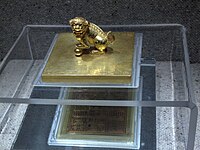 Courtesy seal of Nguyễn lord, gift of emperor Lê Hy Tông, dated 1709, inscribed with Chinese characters meaning Đại Việt quốc Nguyễn chúa vĩnh trấn chi bảo
Courtesy seal of Nguyễn lord, gift of emperor Lê Hy Tông, dated 1709, inscribed with Chinese characters meaning Đại Việt quốc Nguyễn chúa vĩnh trấn chi bảoОфіційні назви[ред. | ред. код]
Ці назви зустрічаються у документах та дипломатичних угодах.
Зображення Українська назва Назви іншими мовами Час існування Опис Ван Ланг в'єт. Van Lang, кит.: 文郎 2524–258 до н. е. Країна в'єтів, що управлялася династією Хонг-банг з столицею в Пхонг Чау (в'єт. Phong Châu) - Ау Лак в'єт. Âu Lac 257–179 до н. е. Країна, що виникла після об'єднання королем Ан Дуонг Вуонгом територій країни Ван Ланг та інших. Столиця знаходилася в Цитаделі Ко Лоа (Cổ Loa). 
Намв'єт в'єт. Nam Viet 204–111 до н. е. Королівство на території північного В'єтнаму і південно-східного Китаю (провінції Ґуандун и Ґуансі). Столиця знаходилася у місті Панью. 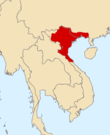
Вансуан в'єт. Van Xuân 544–602 н. е. Країна заснована династією Рання Лі, яка правила у В'єтнамі у 544—602 роках. Її засновник Лі Бі отримав титул «Південного імператора» (Лі Нам Де) і назвав Ван Суан («десять тисяч весен»). Столицею було місто Лонгб'єн, що було розташоване на місці сучасного Ханоя. 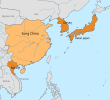
Дай Ко В'єт в'єт. Dai Co Viet 968–1400 н. е. Країна спочатку називалася Дай Ко В'єт в честь Будди Гуатами — «Великий буддистський В'єт». У 1010 році Лі Тхай То, засновник династії Лі, скоротив назву країни до Дай В'єт і переніс столицю у Ханойську цитадель. 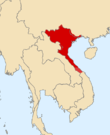
Дайнгу в'єт. Dai Ngu 1400–1407 н. е. Засновник династії Хо змінив назву країни з Дай В'єт на Дай Нгу. 
Королівство В'єт Нам в'єт. Việt Nam Quốc 1804–1839 н. е. Країна заснована королем Гіа Лонгом з столицею в Хюе. В'єт Намом його називали китайці, тоді як інші країни називали Дай В'єт Нам (дослівно «Великий В'єт Південь»). 
Королівство Дай Нам в'єт. Đại Nam Quốc 1839–1945 н. е. Імператор Мінг Манг (в'єт. Minh Mạng) скоротив назву країни до Дай Нам, що дослівно перекладалося як «Великий Південь». З 1885—1945 роки перебувала під протекторатом Франції, поділена на дві території Аннам та Тонкін, тоді як Кохінхіна стала французькою колонією. 
Кохінхіна в'єт. Nam Kỳ англ. Cochinchina 1864–1949 н. е. Область Південного В'єтнаму, захоплена Францією і перетворення у окрему французьку колонію. У 1949 об'єдналася з Республікою Південний В'єтнам 
В'єтнамська імперія в'єт. Đế quốc англ. Empire of Vietnam 1945–1945 н. е. Держава у В'єтнамі, що виникла наприкінці Другої світової війни й існувала з 11 березня по 23 серпня 1945 року. Столицею В'єтнамської імперії було місто Хюе. 
Демократична Республіка В'єтнам в'єт. Việt Nam Dân Chủ Cộng Hòa англ. Democratic Republic of Vietnam (North) 1945–1975 н. е. Комуністичний з 2 вересня 1945 року до 7 травня 1954 року неофіційно керував великою частиною території В'єтнаму. Після поразки французів під час Битви при Дьєнб'єнфу та Женевського договору у 1954 офіційно управляв територією на північ від 17-ї паралелі. Столицею Північного В'єтнаму було місто Ханой. 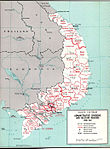
Держава В'єтнам в'єт. Quốc gia Việt Nam англ. Republic of Vietnam 1949–1955 рр Французи не хотіли віддавати південні території колишньої колонії Кохінхіна. Тому у 1949 році за підтримки французів на Півдні В'єтнаму була проголошена держава, формальним правителем якого був імператор Бао Дай. Держава В'єтнам претендувала на всю території В'єтнаму, проте фактично північ контролювався комуністами В'єтмінь. Столицею країни був Сайгон. 
Республіка В'єтнам в'єт. Việt Nam Cộng Hòa англ. Republic of Vietnam 1955—1975 рр Країна, що виникла на місці Держави В'єтнам після розділення В'єтнаму за Женевським договором та вигнання імператора. Держава В'єтнам була перетворена на республіку і першим президентом обрано Нго Дінь З'єма. Столицею країни залишився Сайгон. 
Республіка Південний В'єтнам в'єт. Cộng Hòa Miền Nam Việt Nam англ. Republic of South Vietnam 1975—1976 рр Тимчасове державне утворення, що було сформовано комуністами ще в 1969 році, як альтернативу уряду прозахідної Республіки В'єтнам. Реальну владу вони отримали лише у 1975 році після захоплення усієї території Південного В'єтнаму. 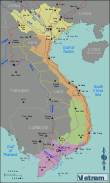
Соціалістична Республіка В'єтнам в'єт. Cong Hoa Xa Hoi Chu Nghia Viet Nam англ. Socialist Republic of Vietnam від 1976 р. дотепер Країна, що утворилася після об'єднання країн Демократична Республіка В'єтнам та Республіка Південний В'єтнам. У 1976 була прийнята нова конституція Соціалістичної Республіки В'єтнам (СРВ), а Сайгон перейменовано на Хошимін. Столицею країни є Ханной. Інші державні утворення[ред. | ред. код]
Держава в'єтів поглинула території, що належали іншим етносам. Наприклад у народу чами в VII—XVII столітті існувала розвинута держава Чампа. Ця країна зазнала з півночі навали в'єтів (Дай В'єт); близько 1470 року було завойоване головне місто Чампа — Віджайя, а в кінці XVII століття — останнє князівство Чампа, Пандуранга, стало васалом В'єтмионгських імператорів. В 1832 році Дайв В'єт поглинув останні території того, що було Чампою.
Джерела[ред. | ред. код]
- HISTORY OF VIETNAM: NAMES, THEMES AND A BRIEF SUMMARY [Архівовано 3 грудня 2018 у Wayback Machine.] // factsanddetails.com
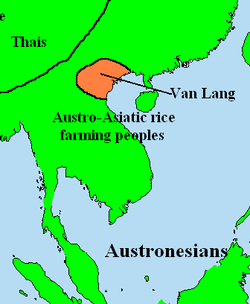

















No comments:
Post a Comment